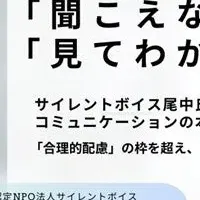
The Workplace Fulfillment Gap: Key Insights from Ricoh's New Index and Its Impact on Employee Retention
In a rapidly evolving work landscape, a new report from Ricoh USA, Inc. highlights a pressing issue undermining employee satisfaction in North America—the Workplace Fulfillment Gap. Released on January 13, 2025, the 2024 North American Workplace Fulfillment Gap Index surveyed over 2,000 full-time workers in the U.S. and Canada, unveiling critical insights about employee engagement and retention.
According to the report, despite the increased flexibility many employees enjoy, fulfillment levels have taken a hit. Respondents rated their overall fulfillment at a mere 6.89 out of 10, with notable differences between on-site workers (6.92) and those working remotely (6.61). Alarmingly, more than half (51%) of employees reported feeling less fulfilled compared to five years ago. This indicates a significant challenge for employers, especially as many are re-implementing return to office (RTO) policies.
Amy Loomis, Research Vice President at IDC, underscores that fulfillment is a crucial component of talent retention strategies in today’s competitive job market. More than 84% of workers stated that their sense of fulfillment significantly influences their decision to remain with a company. This revelation comes at a time when companies are grappling with high turnover rates and intensifying recruitment challenges.
The survey findings further reveal a stark contrast between American and Canadian workers. While 29% of Americans reported feeling fulfilled at work, only 14% of Canadians felt similarly. Generational differences also emerge, with younger employees, particularly Gen Z, demonstrating a stronger association of personal identity with their job roles (63% versus 52% among Baby Boomers). Interestingly, Gen Z also noted that workplace fulfillment allows them to feel happier at home, although they constituted the group least likely to feel that their work positively contributed to society.
Carsten Bruhn, President and CEO of Ricoh North America, emphasizes the need for leaders to foster engagement and communication across different generations, proposing various initiatives like open meetings, mentorship programs, and cross-collaboration opportunities. This inclusive approach is crucial to engaging employees and creating a more fulfillment-oriented workplace culture.
Moreover, the use of technology, particularly AI, is perceived positively among employees, who largely view it as a means to boost productivity, rather than a threat. Approximately 66% of survey participants believe that AI can enhance job efficiency, indicating a willingness to integrate innovative tools into their work environments. This transition points towards a potential shift in workplace dynamics, where employees find more time for their personal interests, further contributing to overall work-life satisfaction.
The survey highlights the essence of camaraderie amongst coworkers, which significantly contributes to workplace engagement. A staggering 91% of respondents noted that their workplace culture plays an integral role in their job satisfaction, further emphasizing that the sense of belonging can bridge the fulfillment gap many employees currently face.
Donna Venable, Chief Human Resources and Shared Services Officer for Ricoh North America, stresses the importance of creating feedback loops, tailored mentorship programs, and adopting servant leadership practices to cultivate an engaging workplace.
In conclusion, the findings from Ricoh's latest report serve as a wake-up call for businesses to realign their strategies towards promoting fulfillment. Fostering a work environment that prioritizes employee engagement, recognizes the significance of personal fulfillment, and adapts to the evolving expectations of the workforce will be essential for companies to thrive in this competitive landscape. Through these initiatives, organizations can create a motivated workforce, ultimately leading to enhanced retention and productivity.
For more insights from the survey and tips on enhancing workplace experiences, visit Ricoh’s official site.
According to the report, despite the increased flexibility many employees enjoy, fulfillment levels have taken a hit. Respondents rated their overall fulfillment at a mere 6.89 out of 10, with notable differences between on-site workers (6.92) and those working remotely (6.61). Alarmingly, more than half (51%) of employees reported feeling less fulfilled compared to five years ago. This indicates a significant challenge for employers, especially as many are re-implementing return to office (RTO) policies.
Amy Loomis, Research Vice President at IDC, underscores that fulfillment is a crucial component of talent retention strategies in today’s competitive job market. More than 84% of workers stated that their sense of fulfillment significantly influences their decision to remain with a company. This revelation comes at a time when companies are grappling with high turnover rates and intensifying recruitment challenges.
The survey findings further reveal a stark contrast between American and Canadian workers. While 29% of Americans reported feeling fulfilled at work, only 14% of Canadians felt similarly. Generational differences also emerge, with younger employees, particularly Gen Z, demonstrating a stronger association of personal identity with their job roles (63% versus 52% among Baby Boomers). Interestingly, Gen Z also noted that workplace fulfillment allows them to feel happier at home, although they constituted the group least likely to feel that their work positively contributed to society.
Carsten Bruhn, President and CEO of Ricoh North America, emphasizes the need for leaders to foster engagement and communication across different generations, proposing various initiatives like open meetings, mentorship programs, and cross-collaboration opportunities. This inclusive approach is crucial to engaging employees and creating a more fulfillment-oriented workplace culture.
Moreover, the use of technology, particularly AI, is perceived positively among employees, who largely view it as a means to boost productivity, rather than a threat. Approximately 66% of survey participants believe that AI can enhance job efficiency, indicating a willingness to integrate innovative tools into their work environments. This transition points towards a potential shift in workplace dynamics, where employees find more time for their personal interests, further contributing to overall work-life satisfaction.
The survey highlights the essence of camaraderie amongst coworkers, which significantly contributes to workplace engagement. A staggering 91% of respondents noted that their workplace culture plays an integral role in their job satisfaction, further emphasizing that the sense of belonging can bridge the fulfillment gap many employees currently face.
Donna Venable, Chief Human Resources and Shared Services Officer for Ricoh North America, stresses the importance of creating feedback loops, tailored mentorship programs, and adopting servant leadership practices to cultivate an engaging workplace.
In conclusion, the findings from Ricoh's latest report serve as a wake-up call for businesses to realign their strategies towards promoting fulfillment. Fostering a work environment that prioritizes employee engagement, recognizes the significance of personal fulfillment, and adapts to the evolving expectations of the workforce will be essential for companies to thrive in this competitive landscape. Through these initiatives, organizations can create a motivated workforce, ultimately leading to enhanced retention and productivity.
For more insights from the survey and tips on enhancing workplace experiences, visit Ricoh’s official site.
Topics People & Culture)










【About Using Articles】
You can freely use the title and article content by linking to the page where the article is posted.
※ Images cannot be used.
【About Links】
Links are free to use.